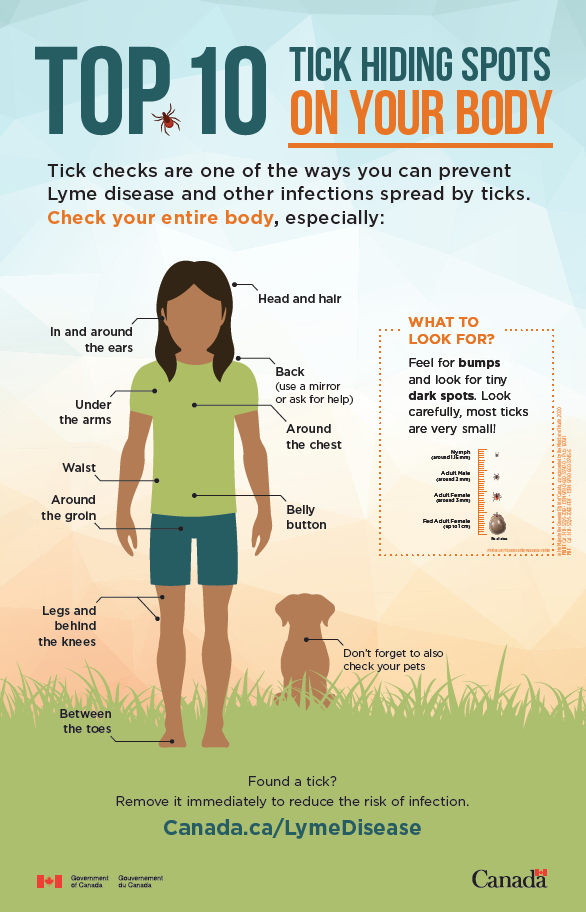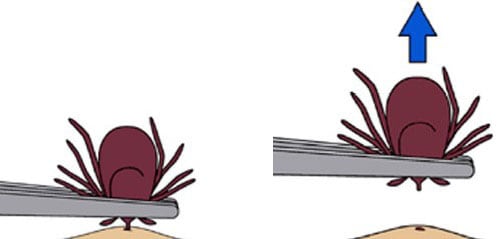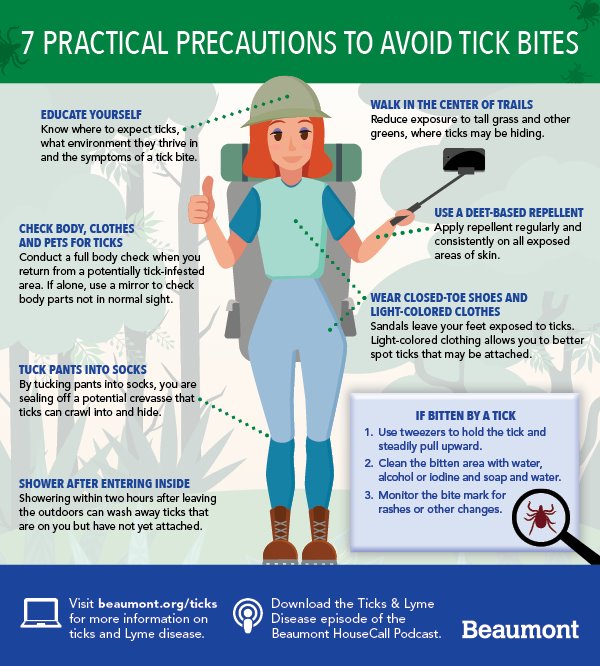The warm winter has allowed ticks to emerge earlier this year. They can carry Lyme and other diseases so wear long pants, use insect repellent* and check yourself after visiting the reservation.
Ticks, especially deer/blacklegged ticks and their larva, are very small. Check for ticks in your hair, along your hairline, behind your ears, on the back of your neck, in your armpits, around your waist band and groin, inside your belly button, around your elbows and the back of your knees, around your boot or shoe laces, and between your toes.
IMPORTANT: If you find a deer tick/ blacklegged tick that has been attached for at least 36 hours, often engorged, consult your health care provider (and keep the tick– they can test it).
* Which tick and mosquito repellant works best?Check out this comparison tool by the CDC evaluating various brands. Most only last a few hours and need to be reapplied.

CDC – How to remove a tick
If you find a tick attached to your skin, simply remove the tick as soon as possible. There are several tick removal devices on the market, but a plain set of fine-tipped tweezers works very well.
- Use clean, fine-tipped tweezers to grasp the tick as close to the skin’s surface as possible.
- Pull upward with steady, even pressure. Don’t twist or jerk the tick; this can cause the mouth-parts to break off and remain in the skin. If this happens, remove the mouth-parts with tweezers. If you cannot remove the mouth easily with tweezers, leave it alone and let the skin heal.
- After removing the tick, thoroughly clean the bite area and your hands with rubbing alcohol or soap and water.
- Never crush a tick with your fingers. Dispose of a live tick by
- Putting it in alcohol,
- Placing it in a sealed bag/container,
- Wrapping it tightly in tape, or
- Flushing it down the toilet.

Follow-up
If you develop a rash or fever within several weeks of removing a tick, see your doctor:
- Tell the doctor about your recent tick bite,
- When the bite occurred, and
- Where you most likely acquired the tick.
Avoid folklore remedies such as “painting” the tick with nail polish or petroleum jelly, or using heat to make the tick detach from the skin. Your goal is to remove the tick as quickly as possible–not waiting for it to detach.
SYMPTOMS OF TICK-BORNE DISEASE (NJ Health Dept.): Skin rash, flu-like symptoms, tiredness, fever, stiff neck, muscle aches, joint pain and dizziness.

